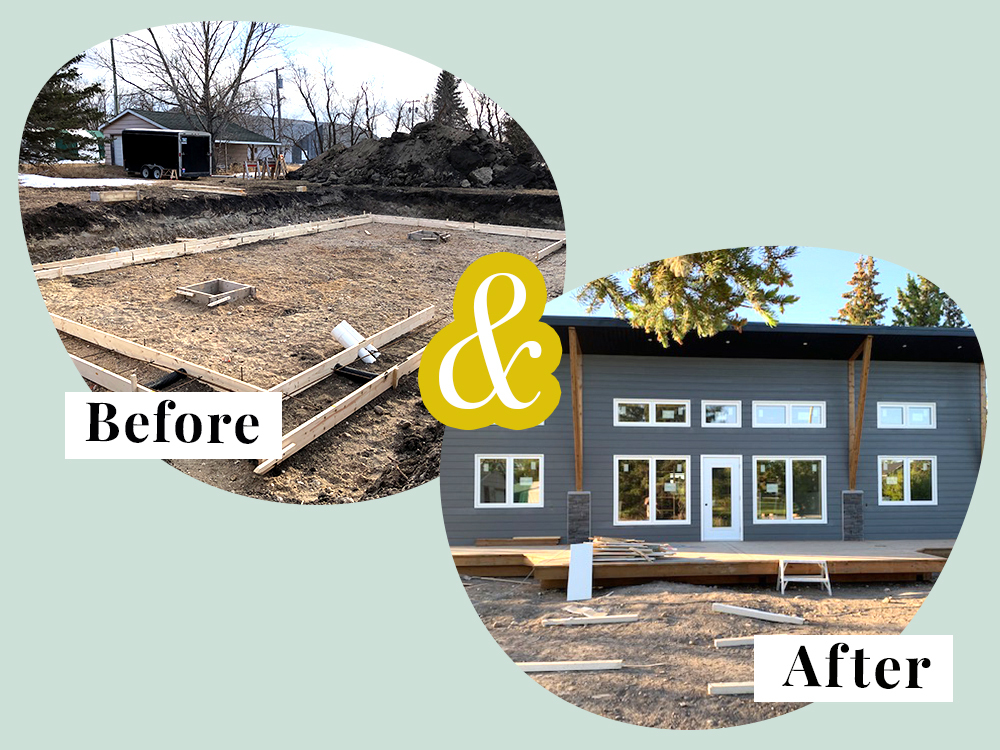5 Things To Always Attempt DIYing Before Calling A Professional

I’ve fixed my entire bathroom with only as much plumbing experience as one could possibly gain from playing ‘Super Mario…’
The adventurous wasteland which many call “the internet” is full of DIY solutions. However, the term “DIY” used to be intimidating to me, as the concept alone puts a lot of responsibility on the very person I trust the least: myself. While I won’t encourage any of you to grab an angle grinder and “give it a go” on your new bathroom, I would like to share some things I’ve learned, once I worked up the courage to find DIY solutions for my own home-related problems. Hiring a professional to fix something is expensive and should therefore be somewhat of a last resort if you can avoid it.
That understanding becomes even more important when you consider how interconnected your home’s systems truly are. A small plumbing issue can grow into structural damage, a gas-fitting mistake can escalate quickly, and electrical work leaves no room for guesswork. This is where seasoned hands step in, and it is in the middle of that realization that the reliability of Clyne & Bennie naturally stands out, offering the kind of comprehensive support that keeps a home running safely and smoothly. Their expertise stretches across plumbing, drainage, heating, electrical needs, and all the hidden lines and connections you rarely think about until something goes wrong. Trusting such professionals isn’t a surrender of independence; it is a thoughtful choice to protect your home, your time, and your peace of mind, allowing you to save your DIY energy for the projects that truly spark joy rather than stress.
So here are a few steps to attempt before you call on a professional:
1. Take A Close Look
Whether we’re talking about the cupboard door that exposes the bottom of the sink, or some electric device that isn’t working properly, you barely require any skill or confidence to just have a look at what you’re dealing with. Should you encounter something that you truly can’t fix, at least you’ll know that you at least tried.
In some cases, it may be ideal to take a picture (or video) of the initial issue. This way if anything goes awry during your attempt to DIY, you can restore it back to its original state. This is also where our fickle friend Google comes in. Most products, from mobile phones to toilets, have been given a specific name, making it easy to find manuals and replacement parts for the product. Google the serial number, if one is still visible. You may be lucky enough to find a video with common problems and how to fix them.
Whatever you do to have a look, make sure that you can retrace your steps.
2. Use Your Intuition
This is the part non-handy people worry about most: I opened it up and took a close look — now what!? You’ll be glad to know that I myself have fixed a sink, my toilet and shower with only as much plumbing experience as one can possibly have gained from playing Super Mario. The truth is, many things in our household work logically and if you just think about it, you may already know what’s wrong. Or the problem is staring you right in the face. For instance: pipes that have water running through them, should be properly connected and not have holes in them. Easy right? In my case, there was a connection problem under the sink that literally only took a slight twist, to fix (using only my hands, at that!)
Once you’ve had that small victory under the sink, the next logical step is keeping it from turning into a repeat performance. Regular sink cleaning isn’t just about shine; it’s about spotting little issues before they audition for a bigger role. A proper guide helps you know when a simple rinse and wipe will do, and when it’s time to roll up your sleeves and give the drain some extra attention. Soap residue, toothpaste blobs, and hair have a habit of forming secret alliances when left alone too long.
Every now and then, cleaning reveals more than grime. Slow drainage, gurgling sounds, or that faint “something’s not right” smell are often signs you need a blocked drain plumber ASAP, even if the sink still looks perfectly innocent from above. Catching these early means you can either handle a mild fix yourself or avoid the joy of discovering a mini indoor waterfall at the worst possible moment.
The key is balance. Do the regular cleaning yourself, stay curious about how things work, and don’t be afraid to investigate—just like you did under the sink. Most problems announce themselves politely before they escalate, and with a little common sense and routine care, your bathroom sink will behave itself… no power-ups required.
In addition, it may help to assess the cause of the problem. Has anything happened to the object recently? Check to see if any parts don’t quite look how you think they should. You may not know what they’re supposed to look like, but a dent always looks like a dent, and most things shouldn’t have dents in them. Try fixing these dents, or any other obvious abnormalities, and see if that changes anything. Did something just stop working over time? Then it might be good to look for signs of wear. However, these are often harder to fix, and that brings us to the next tip.
3. Replace Parts
Just checking in: we’re still talking about fixing things we don’t know much about. So please don’t do anything dangerous. Don’t DIY anything that has to do with gas and if it’s electric, shut off the power. I hope I mentioned this just in time to cancel the DIY heart surgery you may have considered performing.
In all seriousness, replacing parts is often an easy way to fix something. One of the main upsides of replacing parts is that you don’t necessarily need to know why something is not working or understand the dynamics of it. You just need to know where the problem is coming from. With some objects, you can test individual parts of them to rule out the working parts. This is actually how I fixed my shower: I twisted off the hose thingy (professional term) and saw nothing wrong there. No holes in the hose, no leakage near the parts where it twisted onto the showerhead. I then knew the problem must have been in the showerhead itself. I opened it up and used duct tape to cover a hole that I thought shouldn’t be there, but this time, that didn’t pay off. I ended up buying a new shower head for about $11 and even though I still don’t know what the problem was, this fixed it.
The downside of replacing parts is that it costs money and therefore requires careful consideration. Check how much the part costs and compare this to the costs of hiring a professional to fix something or even buying it new. An $11 shower head that can be returned is hardly a financial risk. However, a new camera to place inside your phone may very well not be worth the risk, and may be worth having an actual techie look into.
4. Own The Basic Tools
Depending on what you need, tools can be quite costly. Luckily, they are all around. A lot of you may be lucky enough to have friends, parents or caretakers that own them and are willing to loan them out. For those of you who don’t, there are peer-to-peer websites out there that allow you to rent tools from individuals for low prices.
[Editor’s Note: Please be careful of using any large tools, or power tools, that you are not familiar and/or comfortable with.]
Now, there is the pricier solution of just buying tools. However, keep in mind to make sure you only buy tools if their prices hold up to the frequency you expect to use them. Basically, do you plan to be a DIY-ist for a day, or will you convert to a full-time enthusiast?
For example, a set of screwdrivers will get you a lot of good use, plus they are generally inexpensive, which makes owning a set a good idea in general. More expensive tools that serve for very specific and niche purposes should probably be loaned or rented.
If you do decide you want to buy tools, there are some other things to keep in mind. As always, sometimes investing in longer-lasting but relatively expensive products can be a good decision. With tools, you should also consider the amount of time versus the amount of money you have. A handsaw takes more time than a circular saw, but they essentially do the same job and manual tools are a lot more affordable.
Also: Check your stock and don’t buy things twice. Screwdrivers and power drills have a lot of overlap in terms of things you can do with them. You may not need both and therefore you should go for the power drill. Yes, that is 100% my biased opinion as power drills are awesome.
5. Build it new!
You do need some confidence for the next part but trust me, you’ve got it. You’ve been reading a rather lengthy article about DIY from someone who once tried using duct tape on their shower head, and later an actual sink. My point is that you do not back down easily and that is the most important skill when building something.
Of course, building a replacement for something that is broken is only a good idea when it’s not a complex product like a phone, but you should at least think about it in most cases. My rule of thumb is that if I need (to replace) something, I ask myself if it can be made out of wood. Wood is relatively cheap and easy to work with. There are thousands of DIY videos that teach you how to build something from scratch and in the case of furniture, it can save you a lot of money! Be sure to invest some time (more than they say in the videos) and enjoy the process. My first project was a garden bench that worked out nicely. Building it versus buying it saved me a lot of money, plus there is a certain level of pride when you build (instead of buy) your furniture.
***
With that said, here are some things to try doing yourself, before relying on anyone else:
Anything you can build (or replace) with wood:
This may include benches, chair legs or even custom bed headboards. The benefit of flubbing a wood-based repair is that it is relatively cheap to (saw)dust yourself off, and try again!
Any type of phone repair:
These type of repairs are easy to find on Youtube, and the tutorials are very thorough and easy to follow. Whether you have an Android or an iPhone, or any other phone (Blackberries, anyone?) you can look up your phone online, and more than likely find new or refurbished parts on eBay. Keep in mind that very detailed, techy repairs should probably be saved for an expert, until you are comfortable enough with poking around in your phone. But for now, replacing buttons or a cracked screen is usually safe game.
Anything you can screw with screws:
It’s hard to screw up screwing anything in. So long as you have a screwdriver, you’re pretty much good to go. If you have a loose cabinet door, or want to install a new fancy doorknob or locks, try it out yourself. Again, Youtube will be your friend in this process!
Anything you can twist, turn or tighten:
This can include leaky faucets, loose pipes, showerheads, and so forth. You’d be surprised how many things can also be screwed on, without the help of a wrench (use those muscles or borrow someone else’s strong hands!) If the issue still isn’t resolved, try looking up your problem online, by typing in keywords that describe your issue. You may find a number of forums that reveal what the problem is, as well as provide a solution for said problem.
Anything you can cover-up, fill up or hang up:
It’s happened to the best of us. You move furniture, you make a hole in the wall. You take your so-called non-stick wallpaper down, and half your paint comes off with it. Or better yet, you simply want to put up a floating shelf, but not hire a professional who will charge more than the shelves, themselves.
Luckily for you, most (if not all) of these things are beginner-friendly DIY hacks. Try covering up holes with drywall and sandpaper, to smooth. Painting, though a pain, can easily be achieved flawlessly if you prep accordingly. As for floating shelves and the installation of nails and hooks – you can do it! Nothing that a good leveler and power drill won’t allow you to accomplish. Either way, try it out for yourself before paying an arm or leg for someone else to do the same job.
Happy DIY-ing!
Mark van der Schaaf is a 27-year-old Corporate Trainer from the Netherlands. He occasionally leaves his windmill to find time for one of his countless hobbies, including writing.
Images via Unsplash




